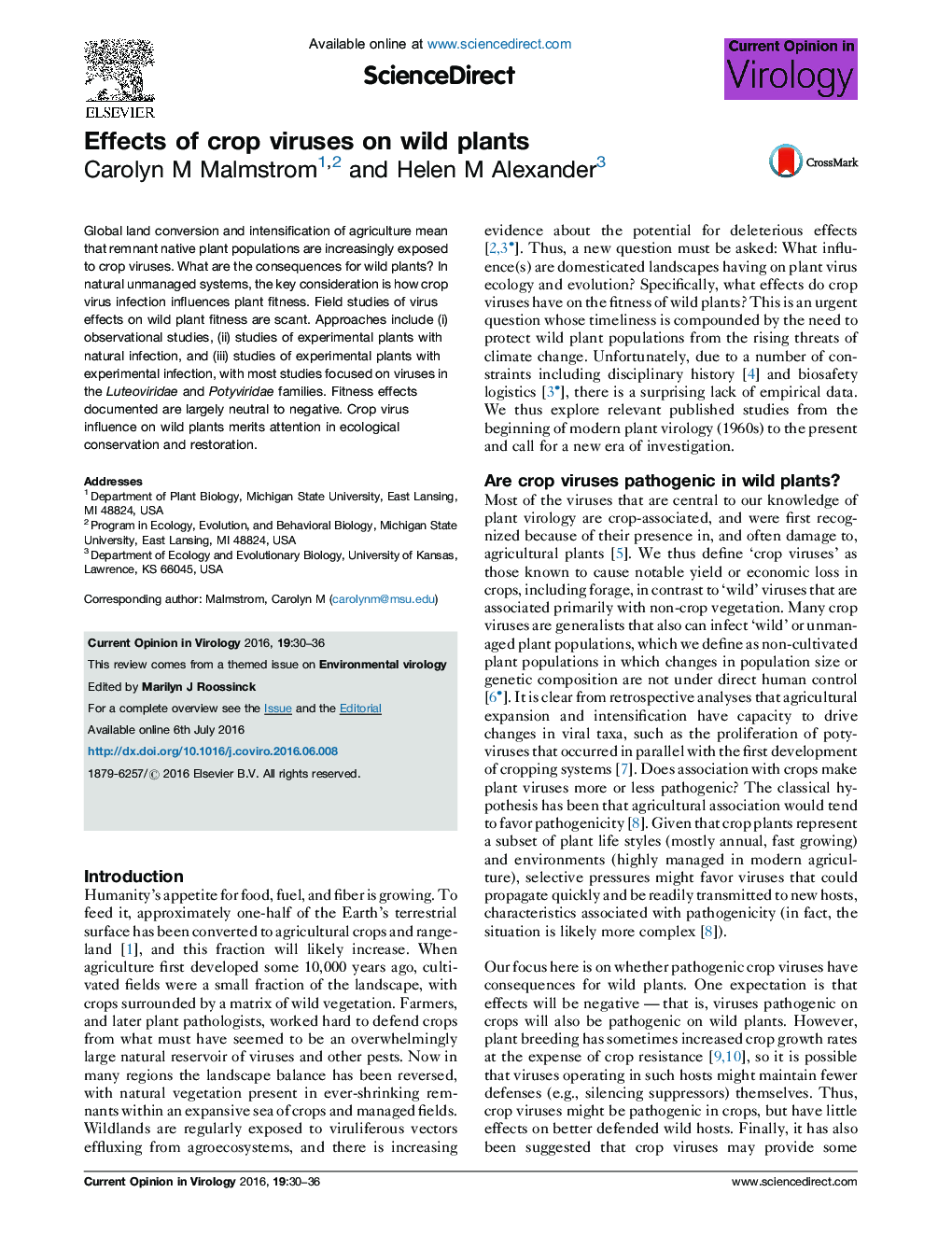| Article ID | Journal | Published Year | Pages | File Type |
|---|---|---|---|---|
| 2473176 | Current Opinion in Virology | 2016 | 7 Pages |
•For wild plants, the essential metric is how virus infection affects host fitness.•Three field research approaches have different costs and benefits.•Luteoviridae and Potyviridae most frequently studied.•Crop virus effects on wild plant fitness components are largely neutral to negative.•Our summary supports concerns that crop viruses may harm wild plant populations.
Global land conversion and intensification of agriculture mean that remnant native plant populations are increasingly exposed to crop viruses. What are the consequences for wild plants? In natural unmanaged systems, the key consideration is how crop virus infection influences plant fitness. Field studies of virus effects on wild plant fitness are scant. Approaches include (i) observational studies, (ii) studies of experimental plants with natural infection, and (iii) studies of experimental plants with experimental infection, with most studies focused on viruses in the Luteoviridae and Potyviridae families. Fitness effects documented are largely neutral to negative. Crop virus influence on wild plants merits attention in ecological conservation and restoration.
Graphical abstractFigure optionsDownload full-size imageDownload as PowerPoint slide
